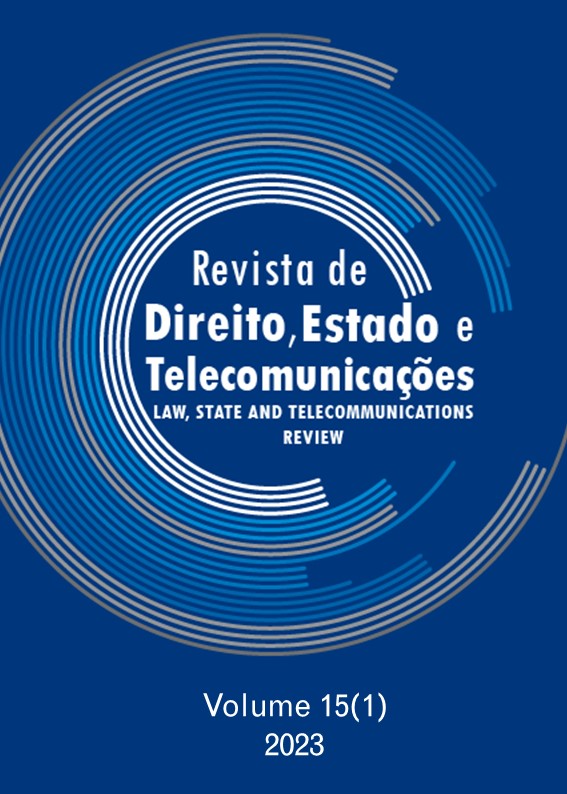The Practices of Advanced Countries in the Legal Regulation of Intellectual Property Objects Created by Artificial Intelligence
DOI:
https://doi.org/10.26512/lstr.v15i1.43935Keywords:
Statutory Regulation. Objects of Intellectual Property Rights. Intellectual Property Law. Judicial Practice.Abstract
[Purpose] The purpose of this study is to outline the general features of legal regulation in advanced countries of artificial intelligence in the field of intellectual property law, namely in the context of legal regulation of intellectual property rights created by such artificial intelligence.
[Methodology/Approach/Design] During the conducted research, the leading method is the comparative legal method. However, apart from it, an array of philosophical, general scientific, and special scientific methods has been used.
[Findings] The main results obtained are the analysis of the provisions of regulations governing the specific features of intellectual property rights created by artificial intelligence in advanced countries of the world, such as the United States of America, Great Britain (England, Scotland, Wales, Ireland), the countries of the European Union, etc.
[Practical Implications] Practical recommendations are provided for improving the national (Kazakh) legislation in the context of legal regulation of this issue.
Downloads
References
Abadi, H.N, Pech, M. 2020. Artificial intelligence trends based on the patents granted by the United States patent and trademark office. IEEE Access, 8, 33-43.
Miernicki, M., Huang, Y. 2021. Artificial intelligence and moral rights. AI & Soc, 36, 319-329.
Torremans, P. 2011. Intellectual property law. Oxford: Oxford University Press.
Brown, A., Kheria, S., Iljadica, M., Cornwell, J. 2019. Contemporary intellectual property. Law and policy. Oxford: Oxford University Press.
Knight, W. 2017. The dark secret at the heart of AI. https://www.technologyreview.com/s/604087/the-dark-secret-at-the-heart-of-ai/.
Convention establishing the world intellectual property organization. 1967. https://zakon.rada.gov.ua/laws/show/995_169.
Popova, L., Khromov, A., Shuba, I. 2021. Intellectual property: a textbook. Kharkiv: Fedorko.
Lee, J-A., Hilty, R., Liu, K-C. 2021. Artificial intelligence and intellectual property. Oxford: Oxford University Press.
Prylypko, D. 2021. Artificial intelligence and copyright. Theory and Practice of Intellectual Property, 2, 15–22.
White paper on artificial intelligence a European approach to excellence and trust. 2020. https://ec.europa.eu/info/sites/default/files/commission-white-paper-artificial-intelligence-feb2020_en.pdf.
Law of the Republic of Kazakhstan “On copyright and related rights”: Law No. 6-I of June 10, 1996 (as amended of May 13, 2020). 2020. https://online.zakon.kz/Document/?doc_id=1005798&pos=72;-44#pos=72;-44.
On copyright and related rights: law of Ukraine dated December 23, 1993 No. 3792-XII: as of January 5, 2022. 2022. https://zakon.rada.gov.ua/laws/show/3792-12#.
Copyright, designs and patents act 1988. 1988. https://www.legislation.gov.uk/ukpga/1988/48/section/9.
Zhou, B. 2020. Artificial intelligence and copyright protection – judicial practice in Chinese courts. https://www.wipo.int/export/sites/www/about-ip/en/artificial_intelligence/conversation_ip_ai/pdf/ms_china_1_en.pdf.
Androschuk, H. 2019. Trends in the development of artificial intelligence technologies: economic and legal aspect. Theory and Practice of Intellectual Property, 4 (108), 59–69.
Schulze, C. 2021. German Federal Patent Court points to solution for Dabus inventions. https://www.juve-patent.com/news-and-stories/cases/german-federal-patent-court-points-to-solution-for-dabus-inventions/.
Schmitt, S., Hudson, J.J., Zidek, A., Osindero, S., Doersch, C., Czarnecki W.M., Leibo, J.Z., Kuttler, H., Zisserman, A., Simonyan, K., Eslami, S.M. 2018. Kickstarting deep reinforcement learning. https://arxiv.org/pdf/1803.03835.pdf.
Dickenson, J., Morgan, A., Clark, B. 2017. Creative machines: ownership of copyright in content created by artificial intelligence applications. European Intellectual Property Review, 39(8), 457-460.
Tymoshenko, Ye.A. 2020. Artificial intelligence as a subject of intellectual property law. Journal of Kyiv University of Law, 4, 328–332.
Hughes, J. 1988. The philosophy of intellectual property. Georgetown Law Journal, 287, 1-73.
Miernicki, M., Ng, I. 2019. Machines, attribution and integrity: artificial intelligence and moral rights. Jusletter IT, 21, 319-329.
Holder, C., Khurana, V., Hook, J., Bacon, G. 2016. Robotics and law: key legal and regulatory implications of the robotics age. Computer Law & Security Review, 32, 557–576.
McCormack, J., Gifford, T., Hutchings, P. 2019. Autonomy, authenticity, authorship and intention in computer generated art. In The 8th International Conference on Artificial Intelligence in Music, Sound, Art and Design (Leipzig, April 2019) (pp. 35-50). Berlin: Springer.
Downloads
Published
How to Cite
Issue
Section
License
Copyright (c) 2023 Law, State and Telecommunications Review

This work is licensed under a Creative Commons Attribution 4.0 International License.
By submitting this paper to the Law, State and Telecommunications Review,
I hereby declare that I agree to the terms of the Creative Commons Attribution 4.0 International (CC BY 4.0).


